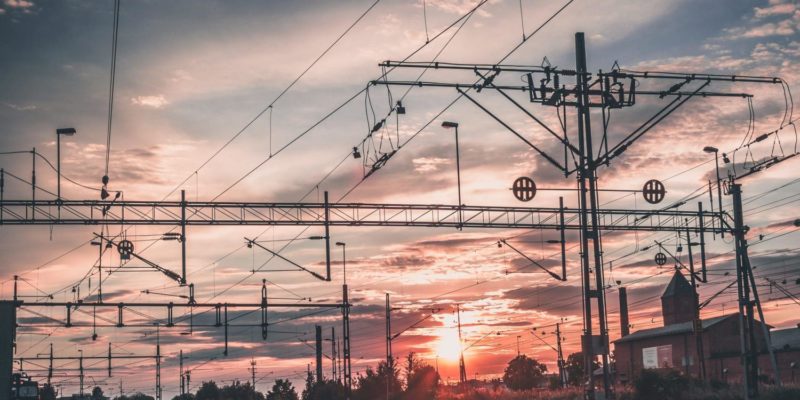Five things to do with HS2
The UK government has given its Notice to Proceed with the first phase of a new high-speed, high-frequency railway line between north-east London and Birmingham. It has also updated the business case for this phase. Following Oxera’s work on the Oakervee Review—which led to the decision to go ahead with the line—we review the economic case, and recommend how the evidence base might be improved.
High Speed 2 (HS2) is the brand name for a new railway planned to be built to serve Manchester and Leeds in the north of England, and come south to Crewe, Birmingham and a new terminal in London on the site of today’s Euston station. Notice to Proceed has just been granted for (part of) Phase 1’s construction to four construction joint ventures.
Phase 1 is the only part of the scheme so far to have planning permission, and is planned to open between 2029 and 2033. The next part (from Birmingham Airport to Crewe) is currently going through parliament, while the National Infrastructure Commission has been tasked with preparing an integrated rail plan for the Midlands and northern England (including the final two legs of HS2).
Along with the Notice to Proceed, the Department for Transport has published an updated business case for Phase 1, albeit understandably with the impacts of COVID-19 on rail passenger demand yet to be incorporated.
Why a new rail line?
Before considering the business case, it is worth stepping through the logic for the scheme, and its key assumptions, which are often misunderstood.
- Existing rail capacity is almost exhausted—the existing West Coast Main Line (WCML), which runs from Glasgow, through Manchester, Birmingham and into London, is heavily utilised by a mixture of freight, commuter and long-distance services—particularly the final 80 miles or so, between Rugby and London. This does not mean that all trains using that stretch of line are full; indeed, due to a mixture of fares-setting rules and the mix of services today, commuter trains are crowded in the peaks, and inter-city services less so.
- The new line takes long-distance services off the WCML—this leaves more space for long-distance freight services, and for commuter services into London, Birmingham and other destinations. So the long-distance ‘offer’ on HS2, replacing inter-city WCML services, has to be at least as good as those it is removing. A key driver of benefits is the services using the ‘released capacity’ (many of which, at least for the committed Phase 1 of the scheme, serve London and south-east England). The ‘north’ benefits much later (2035, on the latest business case, para. 2.60), and the current maturity of the analysis means it is really unclear what released capacity will be used for north of Birmingham.
- HS2 optimises the inter-city services it is replacing—this is perhaps the most controversial element. A range of design speeds could have been proposed for the new line, including 125mph/200kph (current WCML services); 186mph/300kph (speeds reached by Eurostar services on HS1 between London and the Channel Tunnel); or something faster (which has been chosen). In addition, the line is designed to run at high frequency (up to 17 trains per hour), although the business case references work by the University of Birmingham, which reports that operating 16 trains per hour requires ‘perfect conditions’, and further increases would require ‘Automatic Train Operation’.1 While the choice of speed and frequency means more long-distance destinations can be served, it brings much higher cost to the scheme (albeit much higher benefits, as we will see).
- Both ‘legs’ north of Crewe are required—as a replacement for inter-city services that were on the WCML, strictly speaking, HS2 needs to serve Manchester. Serving Leeds and Sheffield on the eastern leg has been planned from the start of the scheme, but isn’t strictly necessary to relieve the capacity constraint.
We can see, therefore, that speed, frequency and destinations of the new line are a choice, providing extra benefits to passengers—but at considerable extra cost.
The economic case
The economic case for the new line captures expected costs, and benefits and ticket revenues—both quantitatively and qualitatively, depending on recommendations in UK government guidance. It forms one of five elements of the overall business case.2
The case concludes that the overall scheme (London to both Manchester and Leeds) will deliver benefits approximately 50% above its costs, while Phase 1 alone is expected to create benefits around 20% above its costs. However, it is fairly meaningless to consider the costs and benefits of Phase 1 on its own, as the split of phases is merely to make the planning and construction of the scheme tractable. No one is suggesting to build phase one and none of the other phases, so treating phase one as a standalone scheme in any economic analysis is of limited value.
What is especially interesting in the economic case is the analysis of sensitivities, which was Oxera’s main focus in our support to the Oakervee Review.3 While sensitivities to costs and demand have unsurprising impacts on the overall value for money of the scheme, we also found in our Oakervee Review work that flexing two specific aspects of the appraisal guidance—a later ‘forecast year’, and extending the appraisal period from 60 years to 100—can have noticeable effects on the analysis (see Table 1 below):
- The appraisal guidance suggests that travel demand should be capped 20 years after the date of the appraisal. If parts of HS2 are not expected to open until at least 2035, then there is almost no time in the modelling to allow the benefits to flow through into the analysis. Put another way, the appraisal base case assumes that the scheme only grows traffic and benefits for four years, whereas the reality will be very different. A sensitivity that makes the forecast year 2049 instead of 2039 makes benefits 80% higher than costs.
- The appraisal period is 60 years, whereas it is pretty clear that a scheme with the extent of HS2 is likely to affect the economic geography of England (and probably Scotland also, given that some services extend to Scotland on the existing network under current plans) for much longer. Accordingly, the new business case tests extending the analysis of benefits and costs for 100 years in total, and this sensitivity makes benefits more than twice costs.
Table 1 Changes to HS2 (full scheme) benefit:cost ratios including sensitivities
| Base case | 2049 ‘forecast year’ | 100-year appraisal | Both sensitivities | |
| Benefit:cost (with wider impacts) | 1.5 | 1.8 | 2.1 | 2.6 |
However, as well as these welcome additions to the analysis of the economic case, we make five suggestions on improving the evidence base for HS2, which would increase faith that value for money can be obtained from the scheme.
- Update the traffic model—putting the elephant in the room of long-term reactions to COVID-19 to one side, a key element of the existing traffic case is the rate at which passengers will switch from existing services and onto HS2. This modelling, based on actual passenger behaviour from the decade before last, is unlikely to be able to represent the way in which passengers are actually going to react to the opening of the new line.
- Be more realistic about frequency—if the University of Birmingham is doubtful about running the planned number of trains per hour, then the modelled case should reflect a more realistic service pattern. Given that the services that would be removed from HS2 would nevertheless operate on the existing network, it is unlikely that benefits would reduce considerably—indeed, the Oakervee Review (para. 11.34) suggests limited effects from reducing frequency to 14 trains per hour (and this was indicative analysis without re-optimising the service pattern).
- Relatedly, consider the balance of benefits in the analysis—as highlighted in the business case (para. 1.65), reducing the speed of HS2 services from the planned 330kph to that of a ‘conventional service’ (we assume this to be 200kph) would ‘only reduce costs by 10 per cent but it would reduce benefits by 33 per cent.’ This rather startling conclusion (for a scheme that is ostensibly about improving rail capacity in south-east England) is, however, consistent with the share of benefits that journey time savings (from faster services) take up in the overall analysis: over 40%, even when total benefits include wider impacts. However, it does reflect the importance of speed, and the related time savings in the economic analysis, even though speed is clearly a matter of choice in the strategic rationale for the scheme.
- Update the analysis of agglomeration—HS2 is expected to enhance the ability of the economy to form clusters of firms (think the preponderance of motor racing teams in Oxfordshire), which increase productivity. However, much of the analysis of agglomeration in the government guidance relies on intra-city effects, whereas the employment centres that HS2 is linking together more efficiently means that agglomeration needs to be modelled on an inter-city basis. This matters, as agglomeration represents over 14% of total benefits for the full scheme.
- Address changes in land use—there has been limited effort to date of relaxing the appraisal assumption that land use is fixed (i.e. that firms and households do not move their location in response to HS2 being built). This is surprising, given the expectation that HS2 will help to ‘rebalance the economy’. However, the business case commits to ‘develop tools to help estimate the longer-term transformational impacts of HS2 on the UK economy, which allow people and businesses to relocate in response to transport investment’ (para. 2.81).
Conclusions
HS2 has been a scheme full of controversy, but with a better understanding of its purpose, and improving analysis of the benefits that it is seeking to deliver, we can all have a more constructive debate about making the most of what gets delivered. Further work is definitely needed to strengthen the case while Phase 1 is being built, and to make the case more positively for the remainder of the scheme—and, indeed, other large transport projects.
1 Business case, para. 1.68.
2 The others being strategic, financial, commercial and management.
3 See paragraphs 11.29 to 11.31 of Department for Transport (2020), ‘Oakervee Review’.
Download
Related

Time to get real about hydrogen (and the regulatory tools to do so)
It’s ‘time for a reality check’ on the realistic prospects of progress towards the EU’s ambitious hydrogen goals, according to the European Court of Auditors’ (ECA) evaluation of the EU’s renewable hydrogen strategy.1 The same message is echoed in some recent assessments within member states, for example by… Read More

Financing the green transition: can private capital bridge the gap?
The green transition isn’t just about switching from fossil fuels to renewable or zero-carbon sources—it also requires smarter, more efficient use of energy. By harnessing technology, improving energy efficiency, and generating power closer to where it’s consumed, we can cut both costs and carbon emissions. In this episode of Top… Read More

